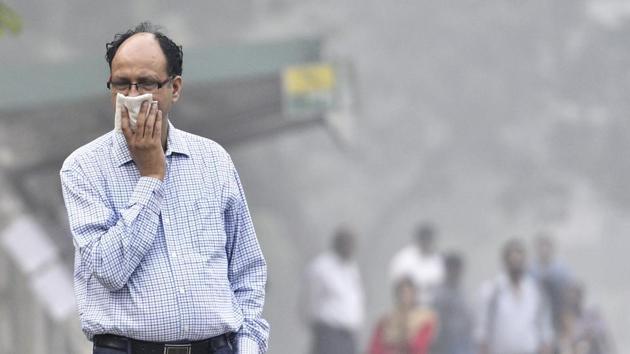Wanted: Political will to pay price for clean air
Delhi’s November smog, the worst in 17 years, led to some positive outcomes. For the first time, the national capital pressed into action emergency measures such as shutting down schools, construction sites and a coal-fired power station when the air pollution peaked immediately after Diwali.
Delhi’s November smog, the worst in 17 years, led to some positive outcomes. For the first time, the national capital pressed into action emergency measures such as shutting down schools, construction sites and a coal-fired power station when the air pollution peaked immediately after Diwali.

Last week, the Supreme Court approved the Central Pollution Control Board’s graded action plan on the lines of Beijing and Paris. When enforced, Delhi-NCR will have to follow a laid-down drill based on the severity of air pollution levels. The measures will range from banning movement of trucks, enforcing road rationing, stopping construction work, shutting down Badarpur power station, brick kilns and factories, raising parking fee, spraying water on unpaved roads, and penalising garbage burning.
The most positive aspect of this plan is that it is not limited to Delhi. It holds good for the entire National Capital Region – Delhi plus 22 districts in Uttar Pradesh, Haryana and Rajasthan. For the longest time, the fight against air pollution has been restricted to the city limits. But air pollution knows no boundary.
When notified, the SC-approved plan should be legally binding on NCR states to establish enforcement mechanism and follow a uniform drill when the pollution peaks. But that’s where the hurdles come.
For one, the NCR does not have a uniform pollution monitoring machinery. Delhi’s is the most advanced with national air-quality index picking data from nine stations. But among the other NCR towns, only Faridabad and Gurgaon have similar capacity. At least 20 other NCR districts will have to be brought on the national air-quality monitoring grid urgently.
At the same time, inspection and enforcement at such a scale will require massive and rapid capacity building. None of these will be possible in the absence of strong political will. Tough measures always extract their price.
Consider China, for example. When their prime minister Li Keqiang declared a war on air pollution two years ago, regulators in China’s most polluted provinces ordered mass closure of polluting quarries, mills and factories. These measures bled the economy already hit by a slowdown, the Economist reported in February 2015.
During 2013-15, China closed down 18,000 polluting factories in Hebei province, not too far from Beijing. Between 2000 and 2014, according to the Economist, real GDP growth in the province had outpaced national GDP growth for all but one year. But as China’s GDP growth slowed from 7.7% in 2013 to 7.4% in 2014, Hebei’s fell much more sharply, from 8.2% to 6.5%.
But that did not deter the Chinese authorities from taking tough measures. In many areas, officials are still being held accountable and punished. China’s New Air Law came into effect this year and prioritised air quality management, requiring cities to stay on track to meet national targets. The authorities are placing less emphasis on GDP growth and talking more about cleaning up the foul air — a health hazard and a dent on China’s international image.
Back home, the most comprehensive report on the causes of air pollution in Delhi by IIT-Kanpur said that at least 13 thermal power plants, with a capacity to produce 11,000 MW of electricity, are located within a 300-km radius of Delhi. These coal-fired units contribute majorly to secondary particles or a super-toxic mix of sulphur dioxide and nitrogen dioxide gases which carried by the north-westerly winds foul up Delhi’s air both in summer and winters.
More alarming, warns Greenpeace, is the fact that another nine coal-fired plants of 5,530MW capacity are under construction and 36 units of 28,040 MW capacity are in the pipeline within the 500km radius of Delhi. The world over, reducing coal consumption has been a standard solution to controlling greenhouse emissions and air pollution.
Can we clean up our air unless the existing power stations in Delhi-NCR improve their emission standards, and the upcoming ones are made to follow the best international practices? Yet, in the name of energy shortage, no government wants to bell the cat.
But then, at the height of stubble burning this October, only one person was fined in Punjab, a state going to polls next year.




